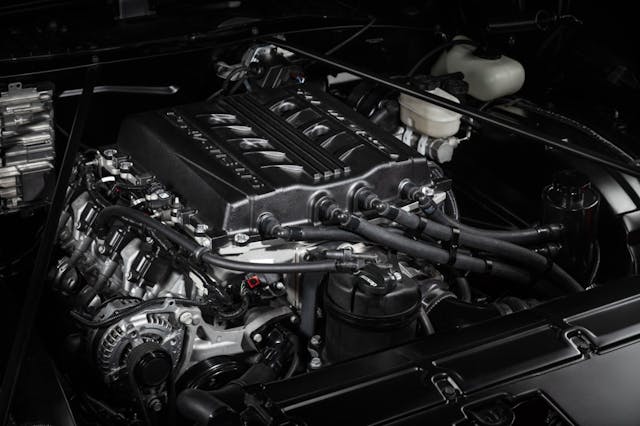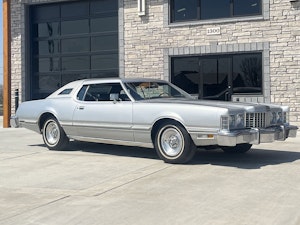Media | Articles
Did GM misname its LT engines?
The launch of the Cadillac Escalade-V has revealed a small, totally inconsequential, yet obvious flaw with GM’s LT family of engines: their names.

Under the hood of each 2023 Escalade-V is a hand-built, supercharged, 6.2-liter LT4 V-8 that produces 682 hp, making it the most powerful Cadillac production vehicle ever. What’s unusual is that the Escalade’s engine is different from that of any previous LT4-equipped vehicle, such as the Cadillac CT5-V Blackwing, Camaro ZL1, or C7 Z06 Corvette. In each of those cars, the supercharger nestled between the cylinder heads displaces 1.7 liters per revolution of its rotors. In the Escalade-V, the supercharger displaces 2.65 liters per revolution. That’s a major change. In fact, the Escalade-V’s LT4 uses the same supercharger, charge cooler, and intake manifold Chevy used on the C7 Corvette ZR1’s engine; but the Cadillac SUV does without the additional port injectors that the Corvette’s LT4 required to keep up with airflow. The Escalade’s engine bay and tall radiator required engineers to make some compromises in intake routing, which is why the truck required a larger supercharger in the first place.
So why does an engine with a totally different supercharger and intake manifold not get its own designation? We asked Cadillac engineers exactly that while we were on the Escalade-V’s launch event in Phoenix, Arizona. Cadillac engineers admit to referring to the Escalade’s 682-hp engine as an “LT4-plus” or an “LT4.5,” which is appropriate as it’s really a hybrid of the LT4 and the LT5. However, they couldn’t quite say what seemed like the obvious answer.
Nobody at Cadillac wanted to admit it, but the existing engine naming boxes them in. Of course, as we mentioned, terminology is totally independent of capability, as the small-block naming scheme didn’t hamper the Escalade-V engineers from building a powerplant that can haul the full-size SUV around with ease, but it appears as if GM never envisioned such an amalgam of parts when it christened the ZR1’s powerplant “LT5.”

The DOHC, 5.5-liter naturally-aspirated LT6 powerplant for the upcoming C8 Z06 has a doubly strange name. First of all, isn’t really an LT, as enthusiasts have come to accept it; the engine shares nothing besides the bore spacing with its pushrod brethren. There’s precedent for that odd naming, however, since the C4 Corvette ZR-1’s DOHC V-8 was named LT5 and it was also a completely different design than a contemporary pushrod small-block.
Marketplace
Buy and sell classics with confidence
With the benefit of hindsight, here’s one way to rename just a few engines in the LT lineup. The high-powered LT6 V-8 built for the Z06 Corvette could have easily been called the LT7. After all, the LS7—all 7.0 liters of it—was the naturally aspirated engine for the C6 Z06.

The LT5 as we know it could have been (and perhaps should be) named LT9, since it was the successor to the C6 ZR1’s LS9. The LT4 could be named LTA after its Gen IV counterpart, the LSA, which used a smaller supercharger than the LS9. That structure leaves plenty of room in the LTX naming scheme for our Escalade-V powerplant to get a unique alphanumeric, like LT8.
While we’re speculating, our nomenclature leaves plenty of vacancies in the LT engine lineup. We wouldn’t have to think too hard to come up with a few nice pushrod parts-bin combinations, either—the HD trucks have a 6.6-liter rotating assembly that would do nicely in an aluminum block.
What LT engine combinations would you hope to see, if you were calling the shots?














